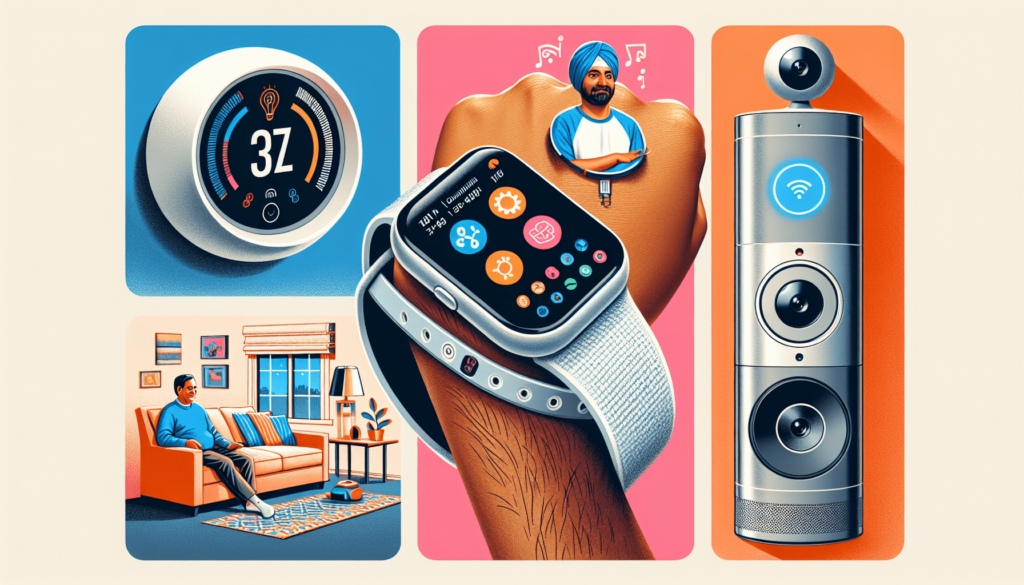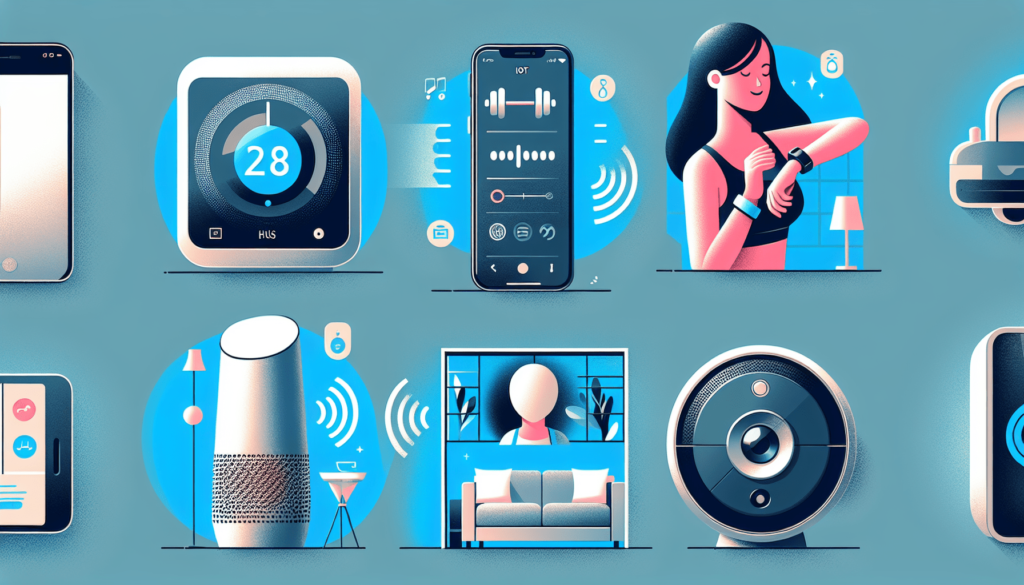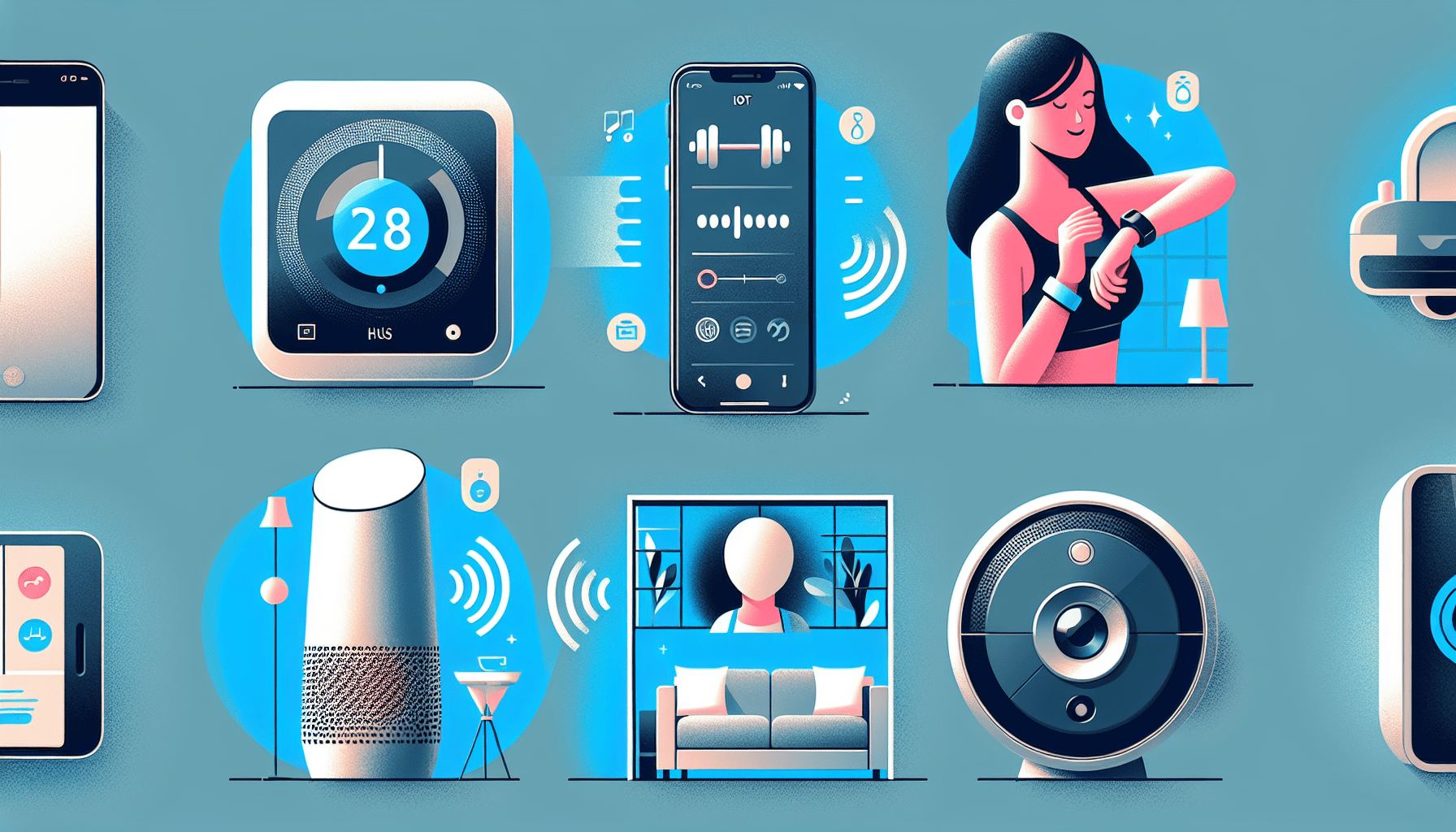Have you ever wondered what exactly the Internet of Things (IoT) entails and how it is applied in everyday life? Well, you’re in luck because this article will provide you with a brief overview of four fascinating examples of IoT. From smart home devices to connected cars, and even wearable technology, we will explore how these innovative applications are revolutionizing the way we interact with the world around us. So, get ready to be captivated by the endless possibilities that the Internet of Things has to offer!

Smart Home
Amazon Echo
The Amazon Echo is a popular smart home device that acts as a virtual assistant. Powered by Amazon’s voice recognition technology, Alexa, the Echo responds to voice commands and can perform a wide range of tasks. Whether you want to play music, set reminders, check the weather, or control other smart devices in your home, the Echo is designed to make your life easier. With its advanced features and constantly evolving capabilities, the Amazon Echo continues to revolutionize the way we interact with our homes.
Google Home
Similar to the Amazon Echo, Google Home is another smart home device that incorporates artificial intelligence to help you with various tasks. Powered by Google Assistant, this device can answer your questions, provide information, and even control compatible smart devices. From managing your schedule to adjusting the thermostat, Google Home is designed to seamlessly integrate into your daily routine. With its sleek design and powerful functionality, this smart home device has become an essential part of many households.
Nest Thermostat
The Nest Thermostat is an innovative device that brings intelligence and energy efficiency to your home’s temperature control. Unlike traditional thermostats, the Nest Thermostat learns your preferences and adjusts accordingly to create a more comfortable environment. It can even detect when you’re away from home and adjust the temperature to conserve energy. With its sleek design, user-friendly interface, and ability to integrate with other smart devices, the Nest Thermostat is a prime example of how IoT technology can enhance our homes.
Smart Security Systems
Smart security systems have become increasingly popular in recent years, offering homeowners peace of mind and enhanced protection. These systems connect various security devices, such as cameras, motion sensors, and door locks, to a central hub that can be controlled remotely. Whether you’re at home or away, you can monitor your property, receive real-time alerts, and even interact with visitors through your smartphone or tablet. With their advanced features and integration with other smart home devices, smart security systems are revolutionizing the way we keep our homes safe.
Healthcare
Smart Wearables
Smart wearables, such as fitness trackers and smartwatches, have become ubiquitous in the realm of healthcare. These devices collect various health data, including heart rate, steps taken, and sleep patterns, providing valuable insights into an individual’s overall well-being. With the ability to track and analyze this data over time, smart wearables empower individuals to take control of their health and make informed decisions. From monitoring fitness goals to detecting potential health issues, these devices have transformed the way we approach personal wellness.
Remote Patient Monitoring
Remote patient monitoring utilizes IoT technology to enable healthcare professionals to monitor patients’ health conditions remotely. By connecting medical devices, such as blood pressure monitors, glucose meters, and heart rate monitors, to a central system, healthcare providers can receive real-time data and make timely interventions. This technology has proven particularly beneficial for patients with chronic illnesses or those who live in remote areas, as it allows for continuous monitoring and timely healthcare support without the need for frequent hospital visits.
Smart Pill Dispensers
Smart pill dispensers are designed to enhance medication management and adherence, particularly for individuals who require multiple medications or have complex medication schedules. These devices automate the pill dispensing process, ensuring the right medication is taken at the right time. Some smart pill dispensers even come with features such as reminders, alerts, and tracking capabilities, which can be synchronized with mobile apps to keep patients and caregivers updated on medication adherence. With the help of IoT technology, smart pill dispensers contribute to better medication management and help individuals stay on track with their prescribed treatments.
Connected Medical Devices
Connected medical devices play a crucial role in improving patient care and streamlining healthcare processes. These devices, including wearable monitors, blood glucose meters, and vital sign monitors, can collect and transmit patient data in real-time to healthcare providers. This connectivity enables healthcare professionals to monitor patients’ conditions, make informed decisions, and provide timely interventions. By integrating these devices with electronic health records and other healthcare systems, the entire care team can have access to accurate and up-to-date patient information, resulting in more efficient and effective healthcare delivery.
Transportation
Connected Cars
Connected cars leverage IoT technology to enhance the driving experience and improve road safety. These vehicles are equipped with sensors and communication systems that enable them to connect to the internet, other vehicles, and roadside infrastructure. By collecting and analyzing data, connected cars can provide drivers with real-time information on traffic conditions, weather updates, and even recommend alternative routes. Additionally, these vehicles can communicate with each other to prevent collisions and optimize traffic flow. With the promise of increased safety, efficiency, and convenience, connected cars are paving the way for the future of transportation.
Smart Traffic Management Systems
Smart traffic management systems utilize IoT technology to optimize traffic flow, reduce congestion, and enhance road safety. These systems collect data from various sources, including connected vehicles, sensors, and cameras, to monitor traffic conditions in real-time. By analyzing this data, traffic management authorities can identify bottlenecks, implement dynamic traffic control measures, and provide drivers with accurate information for efficient travel. From adaptive traffic signals to smart parking solutions, these systems are revolutionizing the way we manage traffic and improve transportation infrastructure.
Fleet Tracking Systems
Fleet tracking systems enable businesses to effectively manage their vehicle fleets by utilizing IoT technology. With the integration of GPS and telematics devices, companies can track the location, speed, and performance of their vehicles in real-time. This data allows businesses to optimize routes, improve fuel efficiency, and ensure compliance with regulations. Fleet tracking systems also provide valuable insights into driver behavior, enabling companies to identify areas for improvement and implement driver safety programs. By harnessing the power of IoT, fleet tracking systems contribute to increased productivity, cost savings, and enhanced safety for businesses.
Intelligent Transportation Systems
Intelligent Transportation Systems (ITS) combine IoT technology with advanced communication and information systems to create a connected and intelligent transportation infrastructure. These systems aim to improve the efficiency, safety, and sustainability of transportation networks through real-time data collection and analysis. From traffic management and incident detection to traveler information and public transportation coordination, ITS encompasses a wide range of applications. By integrating various components and stakeholders, ITS promotes seamless connectivity and collaboration, paving the way for a smarter and more sustainable future of transportation.
Industrial Internet of Things (IIoT)
Predictive Maintenance
Predictive maintenance leverages IoT technology to optimize equipment maintenance and prevent unplanned downtime in industrial settings. By collecting data from sensors embedded in machines, predictive maintenance systems can detect anomalies, predict failures, and schedule maintenance activities proactively. This approach helps businesses minimize costs associated with equipment breakdowns, extend the lifespan of assets, and maximize productivity. From manufacturing plants to utility infrastructure, predictive maintenance is transforming industrial operations by shifting from reactive to proactive maintenance strategies.
Asset Tracking
Asset tracking systems utilize IoT technology to enable businesses to monitor and manage their assets throughout the supply chain. By attaching sensors or using radio frequency identification (RFID) tags, companies can track the location, status, and condition of assets in real-time. This data allows businesses to optimize inventory management, reduce loss or theft, and improve asset utilization. Whether it’s tracking shipments, warehouse inventory, or equipment, asset tracking systems provide businesses with valuable insights to streamline operations and enhance efficiency.
Smart Agriculture
Smart agriculture harnesses the power of IoT technology to revolutionize farming practices and improve agricultural productivity. By deploying sensors, drones, and other connected devices, farmers can monitor soil conditions, weather patterns, and crop health in real-time. This data-driven approach enables farmers to make informed decisions regarding irrigation, fertilization, and pest control, optimizing resource allocation and minimizing environmental impact. Additionally, smart agriculture systems can automate mundane tasks, such as watering or harvesting, freeing up farmers’ time and increasing overall productivity.
Quality Control Systems
Quality control systems in the industrial sector benefit greatly from the integration of IoT technology. By embedding sensors in production lines and machinery, businesses can collect real-time data on parameters such as temperature, pressure, and vibration. This data allows for continuous monitoring and analysis, enabling businesses to identify deviations and implement corrective actions promptly. By automating quality control processes and ensuring consistency, IoT-powered quality control systems contribute to improved product quality, increased operational efficiency, and reduced waste in various industries.

